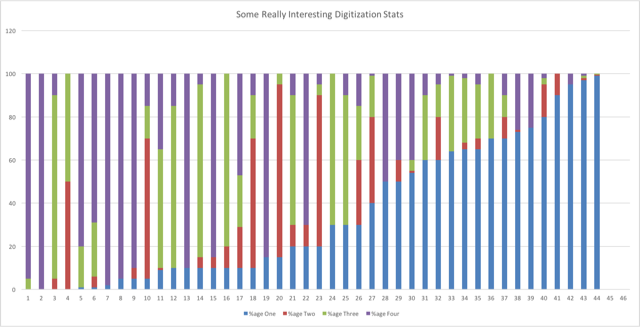- Client:
Collections Management Community - Services:
Evaluation, Research, Project Management, Strategy - Funder:
The Andrew W. Mellon Foundation
What does the collections management landscape look like? What is the ideal future of collections management? BPOC worked with LYRASIS, host of the open source collections management tool, CollectionSpace, and the academic and cultural services organization Ithaka S+R to answer these questions. Through surveys and interviews, the project team generated data and reports to help the museum field - and the vendors who serve it - improve and move forward.
Collections are central to museum missions. Over the past several decades, the ability to manage a collection digitally has become essential. Despite the importance of collections technology, every museum you talk to will tell you about significant challenges they face in managing their collections. In November 2017, the Andrew W. Mellon Foundation awarded a grant to LYRASIS, host of the open source collections management tool, CollectionSpace, the academic and cultural services organization Ithaka S+R, and BPOC to explore the collections technology landscape. LYRASIS provided access to their install base for a targeted study to improve their overall offerings. BPOC designed and deployed surveys and interviews. Ithaka S+R focused on the audience of museums in university settings. Together, the team worked to get a full picture of the collections landscape. The project team looked to answer questions surrounding the percentage of collections cataloged electronically, the tools and support models museums are using, the plans to integrate collections technology with other services, and the strategies that museums do or do not have in place.

To pursue these questions, BPOC designed and developed survey questions with feedback from LYRASIS and museum partners in San Diego and more broadly. BPOC released the surveys, one for CollectionSpace users and one targeted at the broader community, in November 2017. The surveys were kept open through January 2018. BPOC sent the surveys to museum partners and posted them on social media and listservs, including MCN-L. BPOC went on to interview anyone who had filled out the open-ended question at the end of the survey. Interviews ranged from 30 minutes to an hour, and went deeper into the answers provided in the survey. In addition to surveys and interviews, BPOC also researched the collections technology market to provide direct comparisons between the features and support offered by different collections technology vendors.
Through these different avenues, BPOC was able to get significant quantitative and qualitative information about the field’s approach and attitudes towards collections management. Together, the surveys received 79 completed and 153 partial submissions. BPOC completed 30 interviews. While the surveys were distributed internationally, respondents are on the whole, national and included curators, librarians, and developers, but most commonly collections managers. Ultimately, the project team found that no institution is completely satisfied with their collections management progress and technology solutions. While most hope to have their collections digitized and available online, few have the resources required to meet their goals. BPOC hopes that the results of this study, shared online and at conferences, will help improve the tools available and get museum collections the resources they need and deserve.
